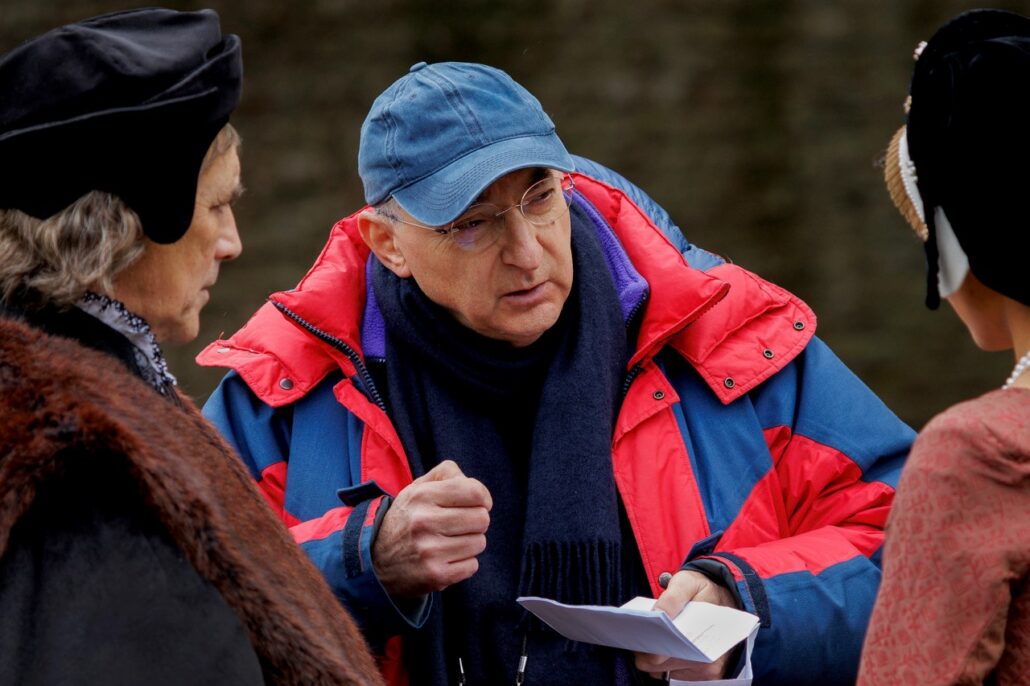The Sandford St Martin 2023 Awards ceremony was held in Manchester University’s Whitworth Hall. This is an excerpt from the printed programme.
When John Reith, the first Director General of the British Broadcasting Corporation, took up his appointment at the BBC in December 1922, he brought baggage. The son of a minister with the Free Church of Scotland, Reith was open in his ambition that among the public services on offer the BBC should promote the ‘stated and official religion of the country’: Christianity. So it was that religion was there at the start of the BBC, and that within four years the BBC’s schedule included an evening sermon, a monthly children’s service, weekly Bible readings, a religious ‘good cause’ appeal, and regular evensong from Westminster Abbey for the benefit of the sick.
Reith was supported in this by the newly appointed Central Religious Advisory Committee (CRAC). Consisting of representatives from the ‘mainstream’ churches CRAC was initially formed to help advise on suitable speakers for the BBC’s evening sermons but it wasn’t long before the expanded their remit to include helping to ‘make Britain a more Christian country’ through broadcasting. Such was their influence that until WWII, Sunday programming schedules on BBC radio and TV were dominated by religious programming. It wasn’t until the rules were loosened for the purported benefit of the troops that less reverent and more controversial content jazz or comedy were allowed.
By the time the commercially-funded ITV hit the airwaves in 1955, these changes had inspired a degree of moral panic among some. It was not uncommon for politicians or church leaders to utter grim warnings of the tsunami of empty entertainment threatening to swamp British audiences. In this attempt to hold back the tide, British broadcasting’s King Canute was Herbrand Sackville, the government minister responsible for television under Churchill. In 1955, guided by the view of the churches he introduced legislation that meant a pause in TV broadcasting on Sunday evenings so not to clash with church services and included a ban on children’s programmes between 2 pm and 4 pm lest TV proved too tempting an alternative to Sunday school.
These restrictions didn’t last. By 1960 nearly three-quarters of British households had a television set. Audiences were keen to be entertained; advertisers were keen to sell their wares alongside programmes like Armchair Theatre, Saturday Night at the London Palladium or Double Your Money; and ITV was keen to accommodate both. Sackville was no longer in government and ITV’s lawyers got his successor to agree that so long as there were “closed periods” on TV reserved for God, then Sundays might also feature different kinds of entertainment. Thus was “the God slot” born.
Religious broadcasting essentially continued in this vein for the next few decades. On Sunday mornings there would be church services on the radio after breakfast; the God Slot showcased sing-a-long opportunities with Songs of Praise or ITV’s Choirs on Sunday (later succeeded by Stars on Sunday and then by Highway); for the more cerebrally-minded there might be moral debate ,with strands like Heart of the Matter and Everyman, or perhaps even a documentary – possibly featuring Melvyn Bragg on the trail of a saint. But while religious broadcasters might have been settling into a groove, religious Britain and the expectations of British audiences continued to evolve irrevocably.
Evidence of the change in British audiences can be found in 1977’s Report of the Committee on the Future of Broadcasting. Overseen by Lord Annan the Report expanded the term ‘religion’ so that it no longer exclusively meant ‘Christian’. Further, the Report made clear that while broadcasters were still expected “to cater for the religious needs of people outside the churches… even if religion lays a duty upon believers to proselytise, they must not use broadcasting to fulfil that duty.”
Enter Channel 4 in 1982. Like ITV and the BBC, Channel 4 was required to air an hour of religious broadcasting every week. Unlike the other channels, religion at Channel 4 was overseen by a self-described ‘enthusiastic agnostic’. As John Ranelagh understood it, his role was to ‘pursue the intellectual examination of faith and to provide religious programmes which other broadcasters in this country generally do not.’ Infamously, one of his first major religious commissions was the three-part documentary series Jesus: The Evidence which examined the facts and historical evidence for Jesus. It didn’t go down well with CRAC or its supporters. Ranelagh was summoned to defend the series in front of a Parliamentary Committee and the series was banned from being rebroadcast. But as Clifford Longley, the Religious Affairs Correspondent for The Times reflected at the time: “The churches have acquired certain expectations about the public broadcasting services which were entirely justified before the advent of Channel 4… (but) Channel 4 is not so much the last of the main public service channels to arrive, as the first swallow heralding the broadcasting pluralism of cable and satellite… it is a channel for all sorts of points of view.”
Fast forward to today and all public service broadcasters are ever more engaged with trying to reflect and represent those different points of view. And while broadcast technology has continued to evolve and change, so too has the face of religious Britain. According to the most recent census, fewer than half of people in England and Wales now describe themselves as Christians while the number of those who say they have ‘no religion’ rose from just over a quarter of respondents ten years ago to 37.2% last year. Conversely, while still in the minority, the census found the numbers of people who now consider themselves members of the Muslim, Hindu, Sikh and ‘other religions’ communities have grown. So, if the last few decades of the 20th century marked a growing cultural dissonance between organised Christianity and the UK’s broadcasting institutions, it’s also heralded the emergence of a third way.
What today’s audiences say and what broadcasters have noted is that there remains a strong public appetite for content that reflects and explores – to use today’s preferred term – ‘belief’. Research for Ofcom found this is particularly true of young audiences between the ages of 16-24 years who have consistently told researchers over the last fifteen years that, even more so than their elders, they seek out and value public service broadcast content or programming that “reflects the full range of cultures and viewpoints of people in the UK (including) specialist programmes about history, science, religion or the arts”.
Taken in consideration alongside the fact that while religious affiliation may be declining in Europe, Australia, Canada, and the US, the rest of the world is becoming more religious – not less – it’s tempting to wonder whether when it comes to religion, younger British audiences, whether they have faith or not, are simply more curious about what people believe and what those beliefs inform the choices they make and way they live. Good religious broadcasting supports this spirit of engagement, and a quick survey of this year’s Sandford St Martin finalists shows just how rich and varied the content in the genre has become. These days audiences are as interested in ‘broadcasting about religion’ as they ever were in ‘religious broadcasting’. With the dawn of new subscription services and the rise of video and audio streaming things are shifting once more. The question for all our broadcasters is, when it comes to religion, can they keep up?







Leave a Reply